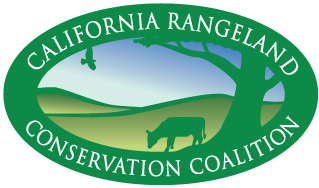March 30, 2022
A note from Codi Hale, RCD of Greater San Diego:
Hello California Ranchers and Conservationists,
It was great spending time with you in the field at the Rancho Jamul Ecological Reserve in San Diego County! We really appreciate the opportunity to collaborate with 4J Horse and Livestock and CDFW on this project, with grant funding from the CA Dept of Food and Agriculture, and the financial support for the event from the California Rangeland Conservation Coalition and California Cattle Council. Special thanks to John Austel, Tracie Nelson, James Bartolome, Liz Kellogg and all of our other knowledgeable presenters. See our photos.
Some follow up and resources from our event:
- Enclosed are the components of a prescribed grazing plan (see below).
- The full Rancho Jamul Grazing Management Plan and the Grazing Handbook is on our website here.
- Elizabeth Vaughn of CAFF graciously shared some resources for GIS mapping. You can watch a tutorial video here, view a guide here, or view the presentation slides here.
San Diego ag folks: If you have not already taken a Producer Needs Assessment (PNA) for the SD Agricultural Planning Program, we are interested in hearing from you! For more information, contact me.
Codi Hale (she/hers) | Agricultural Outreach Assistant
Resource Conservation District of Greater San Diego County
Mobile: 760-702-5668 | Office: 619-562-0096 x104
Prescribed Grazing Plan Components
- Clearly stated goals and objectives
- Resource inventory
- Existing resource conditions and concerns.
- Ecological site or forage suitability group.
- Opportunities to enhance resource conditions.
- Location and condition of structural improvements such as fences, watering sites, including seasonal availability and quality of water.
- Forage inventory of the expected quality, quantity, and species in each pasture.
- Forage-animal balance that ensures forage produced or available meets forage demand of livestock and/or wildlife.
- Periods of grazing and/or browsing, deferment, rest, and/or other treatment activities for each management unit including flexibility for adaptive management decisions, contingency plan and monitoring plan in order to meet goals and objectives.
- Contingency plan detailing potential problems (i.e., drought, flooding, and insects). 528-CPS-5 NRCS, CA October 2017 serves as a guide for adaptive management decisions in grazing prescription adjustments in order to mitigate resource and economic effects.
- Monitoring plan with appropriate protocols and records to assess progress of grazing strategy toward goals and objectives. Short-term and long-term monitoring should allow for timely adaptive management decisions. Identify the key areas, plants, and other indicators that the manager should evaluate in making grazing management decisions.
